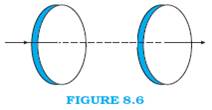Figure 8.6 shows a capacitor made of two circular plates each of radius 12 cm, and separated by 5.0 cm. The capacitor is being charged by an external source (not shown in the figure). The charging current is constant and equal to 0.15A.
(a) Calculate the capacitance and the rate of change of potential difference between the plates.
(b) Obtain the displacement current across the plates.
(c) Is Kirchhoff’s first rule (junction rule) valid at each plate of the capacitor? Explain.

Given: Radius of circular plates, r = 12 cm = 0.12 m
Distance between the circular plates, d = 5.0 cm = 0.05 m
Current, I = 0.15 A
(a) Capacitance between the circular plates is given by the following expression:
![]()
Where A is the area of plate and is given by the relation: A = π r2
And Absolute permittivity ϵ0 = 8.854 ×10-12 C2N-1m-2
Now putting the values in above relation
⇒ ![]()
![]()
![]()
⇒ C = 8.0032 ×10-12 F
Rate of change of potential difference between the plates can be calculated as follows:
We know that charge on each plate can be find out using the following expression:
q = CV .... (i)
where C is the capacitance between the two plates
V is the potential difference between the plates
Capacitance between the two plates C = 8.0032 ×10-12 F
Converting in pF, we get C = 80.032 pF
Now differentiating equation (i) w.r.t time
![]()
Since ![]()
⇒ ![]()
![]()
⇒ ![]()
(b) The displacement current will be equal to the conduction current across the plates. Therefore, displacement current Id = Ic = 0.15 A.
(c) If we take the total current as sum of conduction current and displacement current then the Kirchhoff’s first rule is valid at each plate of the capacitor.